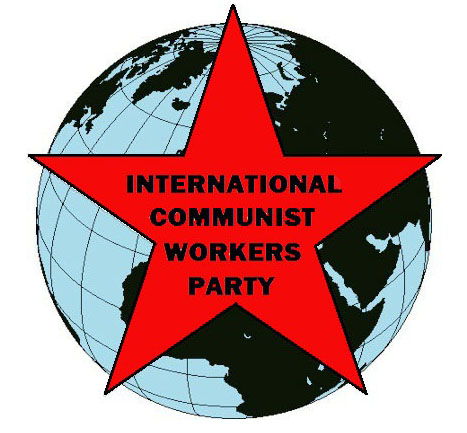
 |
FIGHT FOR COMMUNISM! |
International Communist Workers Party | |
Recent news in Red Flag shows the party in South Africa has a big opportunity now to recruit new members. This rising wave means working hard to consolidate members who need to learn our line and have many questions and disagreements. This work can’t be done by the South African comrades alone. The whole party needs to help them expand. We must raise money for literature and transportation, of course. More importantly, however, we must learn how to build international relations of solidarity and struggle. We must learn from each other so the advances of the party in one place help the party to advance in many other places. Dialectics can help us understand why this is so.
An earlier article discussed some of the twists and turns in dialectical development, particularly in the communist movement. We mentioned the law of the “negation of the negation,” which means that when qualitative change is followed by a second one (two “negations”) the result is never quite the same as what you started with, even if it is similar. Here we discuss one way of thinking about the negation of the negation law that was popular in the communist movement in China about 50 years ago. That is the idea that movements go forward in waves, where the next wave is different from the last one, and if we are successful, rises to a higher level. This is what we are trying to do in our work in South Africa.
Like the communist movement in the USSR, the movement in China made very fundamental errors that led to its downfall. Chinese communists did not realize that socialism is just a form of capitalism, one that turns into obvious capitalism, the situation in China today. Worse yet, the Chinese communists made repeated alliances with Chinese capitalists in the name of nationalism. Despite these errors, the Chinese communists spread dialectics widely, and many of their ideas and experiences are still valuable.
“Advancing in waves” means that a process can move forward quickly for a time and then pause or fall back before advancing again. A political movement cannot make a maximum effort all the time, but needs periods of intense activity followed by evaluation and consolidation. Lenin described many movements advancing in waves (including counterrevolutionary ones). Mao Zedong compared wave-like advance to an army that attacks, achieves its objective, and rests and rearms for the next attack.
In 1958 Mao described the dialectics of advancing in waves:
“… a wave-like form of progress is the unity of opposites, deliberation and haste, the unity of opposites, hard work and dreams.”
Mao argued that advancing in waves is an objective, necessary feature of a movement, not something people get to choose or avoid. After we go all out to mobilize the masses for a march or a conference, we must consolidate the people we have mobilized. We must deepen the relationships we have built. This allows us to intensify the political struggle for a deeper understanding of communist politics. We organize party clubs and other political structures and make a plan for work that our stronger forces can carry out.
Here is an important example from Soviet history. By 1923, after the revolutionary war was over, the communists realized that there were not enough industrial workers in the party, only about 12%. They decided to recruit workers “from the workbench” in large numbers. When Lenin died after a long illness, the party appealed to workers to join to honor him and follow in his footsteps. This was called the “Lenin Enrollment” and several hundred thousand workers joined in a short period, raising the percentage of industrial workers to about 35%.
This big opportunity created a big problem, the problem of educating the mass of new members in communist theory and practical work. This meant producing a lot of new study materials that made sense to people with limited reading skills: new magazines and pamphlets, study groups, leadership training, etc. Once this hard work was done, the new worker members made a fundamental change that prepared the party for future advances.
The mass of industrial workers in the party were a key force in a number of ways. The wrong ideas of party “oppositionists” (Bukharin and Trotsky) were rejected by many workers. When the rural capitalists (“kulaks”) withheld grain from the cities in 1928, the party sent armed workers to confiscate it. The kulaks’ grain strike made it clear that the Soviets had to have collectivized agriculture, so the party recruited more than 25,000 communist industrial workers to move to the countryside in 1930. These workers were critical to the success of the collectivization campaign.
All movements develop in twists and turns, catastrophes and leaps forward. If we make mistakes, a deep trough behind the wave can pull us backwards. If we don’t consolidate the people we have mobilized, we’ll start the next mobilization from scratch, and we’ll be on a constant, demoralizing, treadmill. Instead of advancing to a higher level, the victory can turn into defeat. We must seize our opportunities, advance if we can, and learn from our mistakes if we do not. But that is how we mobilize the masses for communism, and now is the time for our wave to rise in South Africa.
